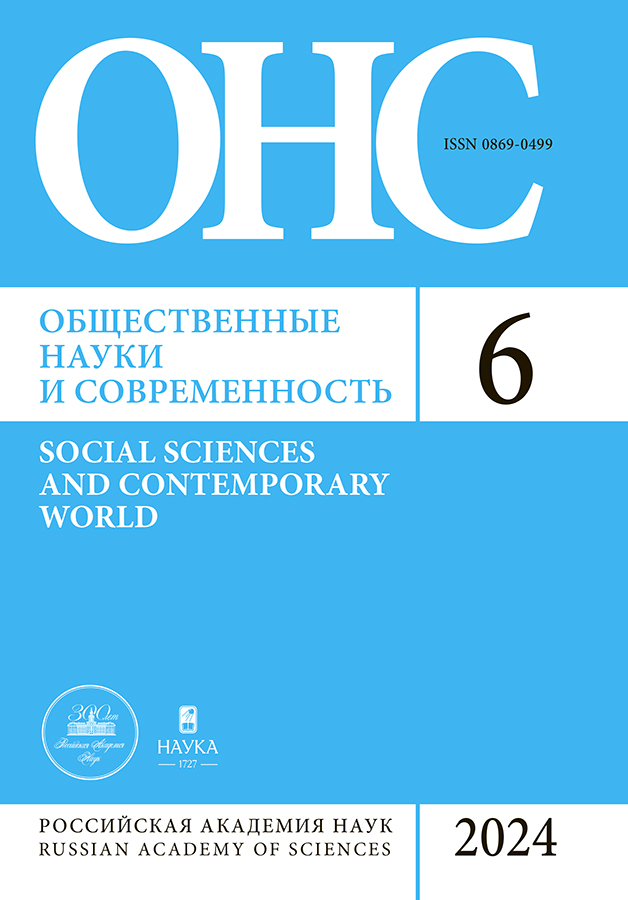The illiberal model of regulating illegal labor immigration in the Persian Gulf states
- Authors: Zherlitsina N.A.1
-
Affiliations:
- Institute for African Studies, Russian Academy of Sciences
- Issue: No 6 (2024)
- Pages: 57-67
- Section: Migration problems
- URL: https://kazanmedjournal.ru/0869-0499/article/view/681324
- DOI: https://doi.org/10.31857/S0869049924060041
- EDN: https://elibrary.ru/JBYTAT
- ID: 681324
Cite item
Abstract
Based on migration statistics and documents from the Gulf Research Center, the World Bank, the UN, and the World Labor Organization, the approach to regulating illegal labor migration in the Gulf countries is studied. Systemic, institutional, and comparative methods, as well as political science analysis, are used. It is shown that the Persian Gulf region is the largest migrant labor market in history and the epicenter of South–South migration. All six rich oil states of the Persian Gulf have common features as migration rentiers, which create a special – illiberal – model of regulating illegal immigration. It is distinguished by a comprehensive segmented alienation of migrants. States maintain a regime of exclusive citizenship, practically not providing migrants with the opportunity to naturalize. It is concluded that the governments of the Persian Gulf countries have abandoned the classical integration strategy in relation to migrants. Modern realities convince of the relevance of the illiberal approach to migration management in other regions of the world.
Full Text
About the authors
Natalia A. Zherlitsina
Institute for African Studies, Russian Academy of Sciences
Author for correspondence.
Email: ns_inafr@mail.ru
ORCID iD: 0000-0001-8647-9419
Doctor of Sciences (History), Leading Research Fellow
Russian Federation, MoscowReferences
- Маценко И.Б. (2019) Трудовой потенциал в Африке: состояние и перспективы развития // Ученые записки Института Африки РАН. № 3 (48). С. 18–29. Matsenko I.B. (2019) Labor potential in Africa: the state and prospects of development. Scientific notes of the Institute for African Studies of the RAS, no. 3 (48), pр. 18–29. (In Russ.)
- Мелкумян Е.С. (2020) Султанат Оман – КНР: стратегическое партнерство // Азия и Африка сегодня. № 12. С. 46–50. Melkumyan E.S. (2020) Sultanate of Oman – China: Strategic partnership. Asia and Africa today, no. 12, pр. 46–50. (In Russ.)
- Adamson F., Tsourapas G. (2020) The Migration State in the Global South: Nationalizing, Developmental, and Neoliberal Models of Migration Management. International Migration Review, no. 53 (3), pр. 853–882.
- Birks J.S., Seccombe I.J., Sinclair C.A. (1988) Labour Migration in the Arab Gulf States: Patterns, Trends and Prospects. International Migration, no. 26 (3), pр. 267–286.
- Fargues Ph., Bel-Air F. (2015) Migration to the Gulf States: The Political Economy of Exceptionalism. Global Migration: Old Assumptions, New Dynamics. Ed. by Arcarazo D.A. and Wiesbrock A. Santa Barbara, CA: Praeger. Рр. 139–166.
- Gardner A.M. (2008) Strategic Transnationalism: The Indian Diasporic Elite in Contemporary Bahrain. City and Society, no. 20 (1), pр. 54–78.
- Gibney M. (2009) Statelessness and the Right to Citizenship. Forced Migration Review, no. 32, pр. 50–51.
- Jamal М.A. (2015) The «Tiering» of Citizenship and Residency and the «Hierarchization» of Migrant Communities: The United Arab Emirates in Historical Context. International Migration Review, no. 49 (3), pp. 601–632.
- Joppke Ch. (2017) Citizenship in Immigration States. The Oxford Handbook of Citizenship. Ed. by Shachar A., Baubock R., Bloemraad I., Vink M. Oxford: Oxford University Press. Рр. 385–406.
- Kapiszewski A. (2006) Arab versus Asian Migrant Workers in the GCC Countries. Beirut: United Nations Secretariat. 25 p.
- Longva A.N. (1999) Keeping Migrant Workers in Check: The Kafala System in the Gulf. Middle East Report, no. 211, pр. 20–22.
- Lori N. (2011) National Security and the Management of Migrant Labor: A Case Study of the United Arab Emirates. Asian and Pacific Migration Journal, no. 20 (3–4), pр. 315–337.
- Lori N. (2012) Temporary Migrants or Permanent Residents? The Kafala System and Contestations over Residency in the Arab Gulf States. Center for Migrations and Citizenship. Institut Francais des Relations Internationales. November. 20 p.
- Menz G. (2011) Neо-Liberalism, Privatization and the Outsourcing of Migration Management: A Five-Country Comparison. Competition and Change, no. 15 (2), pp. 116–135.
- Milanovic B. (2016) Global Inequality: A New Approach for the Age of Globalization. Cambridge, MA: Harvard University Press. 320 p.
- Neha Vora. (2013) Impossible Citizens: Dubai’s Indian Diaspora. Durham, NC, and London: Duke University Press. 264 p.
- Rahman A. (2010) Migration and Human Rights in the Gulf. Migration and the Gulf. February, 16–18. Washington, DC: Middle East Institute. 2 February. https://www.mei.edu/publications/migration-and-human-rights-gulf
- South Asian Migration to Gulf Countries. History, Policies, Development. (2016) Ed. by Prakash Jain C., Ginu Z.O. Routledge, India. 328 p.
- The Global Color Line: Racial and Ethnic Inequality and Struggle from a Global Perspective. Research in Politics and Society. (1999) Ed. by Batur-Vanderlippe P. Greenwich, CT: JAI Press. 408 p.
- The Persian Gulf in Modern Times. (2014) Ed. by L. Potter. New York: Palgrave McMillan. 393 p.
- Tsourapas G. (2018) Labor Migrants as Political Leverage: Migration Interdependence and Coercion in the Mediterranean. International Studies Quarterly, no. 62 (2), pр. 383–395.
- Van Hear N. (1993) Mass Flight in the Middle East: Involuntary Migration and the Gulf Conflict, 1990–1991. Geography and Refugees: Patterns and Processes of Change. Ed. by Black R., Robinson V. London: Belhaven. Рр. 64–84.
Supplementary files










